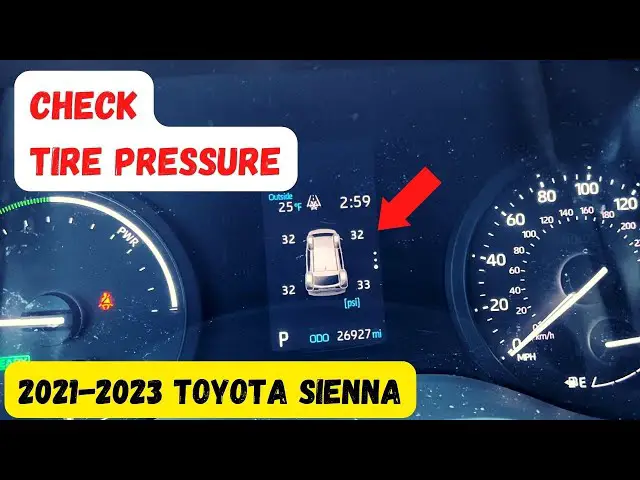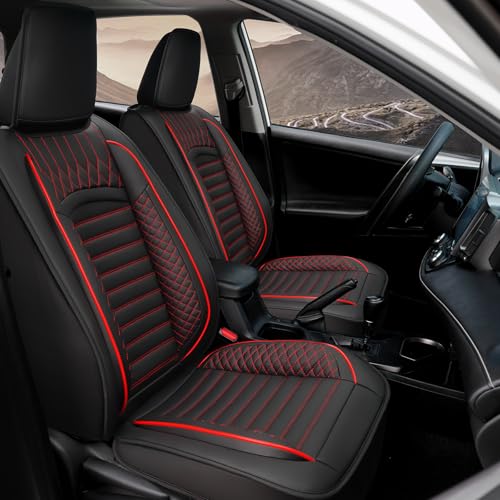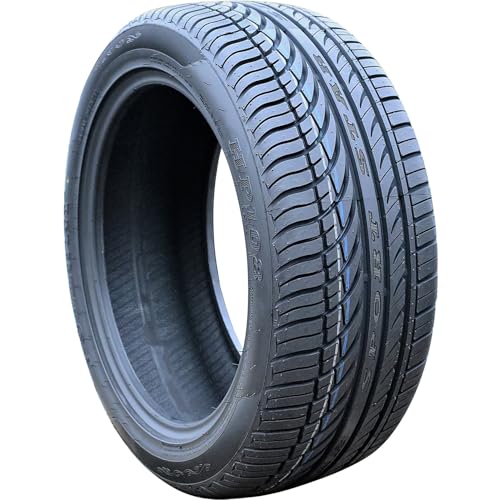To check tire pressure on your Toyota Corolla, start with a tire pressure gauge. Locate the tire valve stem, remove the cap, and press the gauge onto the valve.
Table of Contents
ToggleThe gauge will display the tire pressure. Maintaining the correct tire pressure is crucial for your Toyota Corolla’s performance and safety. Proper tire pressure ensures better fuel efficiency, longer tire life, and a smoother ride. Many drivers overlook this simple yet essential task.
Checking your tire pressure regularly can prevent accidents and save you money in the long run. In this guide, we will walk you through the steps to check your tire pressure, ensuring your Toyota Corolla runs at its best. With our easy-to-follow instructions, you’ll become confident in maintaining your vehicle’s tire health. Let’s get started!

Credit: www.youtube.com
Importance Of Correct Tire Pressure
Maintaining the correct tire pressure in your Toyota Corolla is crucial. It ensures a safe and efficient driving experience. Let’s delve into why proper tire pressure is important.
Safety Concerns
One of the most significant reasons for correct tire pressure is safety. Under-inflated tires can lead to tire failure. This can cause accidents. Over-inflated tires, on the other hand, reduce traction. This can be dangerous, especially on wet roads. Proper tire pressure ensures that your tires have the right grip on the road. This helps in preventing skids and slides. Regularly checking tire pressure can save lives.
Fuel Efficiency
Proper tire pressure also affects your vehicle’s fuel efficiency. Under-inflated tires create more rolling resistance. This makes your engine work harder. As a result, it consumes more fuel. Over-inflated tires can also negatively impact fuel efficiency. Maintaining the correct tire pressure can enhance your car’s mileage. This saves you money on fuel in the long run.
In summary, keeping your Toyota Corolla’s tire pressure at the recommended level is vital. It ensures safety and improves fuel efficiency. Regular checks are a small effort for big benefits.
Credit: www.toyotanation.com
Tools Needed
Checking the tire pressure on your Toyota Corolla is essential for safety. It also helps in maintaining fuel efficiency and prolonging the life of your tires. You don’t need to be a mechanic to do this. Just gather a few simple tools, and you are ready to go.
Pressure Gauge
A pressure gauge is a must-have tool. It measures the air pressure in your tires. You can find digital or analog gauges. They are easy to use and read. Place the gauge on the tire valve. Press it firmly to get an accurate reading. Compare the reading with the recommended pressure in your owner’s manual.
Air Compressor
An air compressor is another essential tool. It helps you add air to your tires if the pressure is low. You can find small, portable air compressors. These are easy to carry and use. Connect the compressor to the tire valve. Turn it on and add air until you reach the recommended pressure. Always check the pressure again after filling to ensure accuracy.
With these tools, maintaining the correct tire pressure in your Toyota Corolla is simple. Regular checks can prevent issues and keep you safe on the road.
Finding Recommended Tire Pressure
Maintaining the right tire pressure for your Toyota Corolla is essential. It ensures safety and improves fuel efficiency. Finding the recommended tire pressure is easy. You can refer to several sources for this information.
Owner’s Manual
One of the best sources is the owner’s manual. The manual provides detailed information. Look for the tire pressure section. It will list the recommended PSI (pounds per square inch). This is the ideal pressure for your tires.
Driver’s Door Jamb
Another place to check is the driver’s door jamb. Open the driver’s door and look at the side of the door frame. You will see a sticker. This sticker contains important information. It includes the recommended tire pressure for both front and rear tires. Make sure to follow these guidelines for the best performance.
Preparing The Car
Before you check the tire pressure on your Toyota Corolla, it’s important to prepare the car properly. This ensures accurate readings and keeps you safe. Follow these steps to get started.
Parking The Car
First, park your Toyota Corolla on a flat surface. This prevents the car from rolling and gives you a stable base. Avoid parking on a slope or uneven ground. Turn off the engine and apply the parking brake. Make sure the car is in “Park” if it’s an automatic, or in gear if it’s a manual. This keeps the car secure while you work.
Cooling Down Tires
Next, let the tires cool down before you check the pressure. Hot tires give inaccurate readings. Wait at least three hours after driving. If you must check sooner, ensure the car hasn’t been driven more than a mile. Cooler tires give more accurate pressure readings. This step is crucial for the best results.
Measuring Tire Pressure
Measuring tire pressure is essential for maintaining your Toyota Corolla. Proper tire pressure ensures safety and improves fuel efficiency. It’s easy to check the tire pressure with a few simple steps. Let’s explore how to measure tire pressure efficiently.
Removing Valve Cap
Locate the valve stem on your tire. This is a small rubber or metal tube sticking out from the wheel. Twist the valve cap counterclockwise to remove it. Keep the cap in a safe place to avoid losing it.
Using Pressure Gauge
Take a tire pressure gauge and press it firmly onto the valve stem. Ensure there is no hissing sound, which means air is escaping. The gauge will display the current tire pressure. Compare the reading with your Toyota Corolla’s recommended pressure. You can find this information in the owner’s manual or on a sticker inside the driver’s door. If the pressure is low, add air until it reaches the recommended level. If it’s too high, release some air to adjust it. Once done, replace the valve cap by twisting it clockwise.
Regularly checking your tire pressure helps keep your Toyota Corolla running smoothly. It also prolongs the life of your tires.
Interpreting The Readings
Understanding how to interpret tire pressure readings is crucial for maintaining your Toyota Corolla. Accurate readings ensure your tires are neither under-inflated nor over-inflated. This helps in improving fuel efficiency, enhancing safety, and extending tire life.
Comparing With Recommended Pressure
To get the most accurate tire pressure, always compare your readings with the recommended pressure. You can find this information in the owner’s manual or on the sticker inside the driver’s door. The recommended pressure is usually measured in PSI (pounds per square inch).
- Locate the recommended PSI for both front and rear tires.
- Check your tire pressure readings using a reliable gauge.
- Compare your current readings with the recommended PSI.
If the readings match the recommended values, your tires are properly inflated. If not, you need to adjust the pressure accordingly.
Identifying Under Or Over Inflation
Once you have your readings, it’s essential to identify if the tires are under or over-inflated. Both conditions can affect your car’s performance and safety.
| Condition | PSI Reading | Action Needed |
|---|---|---|
| Under-Inflation | Below recommended PSI | Add air to the tires |
| Over-Inflation | Above recommended PSI | Release air from the tires |
Under-inflated tires can lead to poor fuel efficiency and increased wear. Over-inflated tires can cause a harsh ride and uneven tire wear. Always ensure your tires are at the recommended pressure for optimal performance.
Adjusting Tire Pressure
To check tire pressure on a Toyota Corolla, use a tire gauge on each tire’s valve stem. Ensure the reading matches the recommended pressure found in the owner’s manual or on the door frame. Adjust as needed for a safe and smooth drive.
Proper tire pressure is crucial for your Toyota Corolla’s performance and safety. Both overinflated and underinflated tires can cause issues. Knowing how to adjust the tire pressure yourself can save you time and money.Adding Air
To add air to your tires, first, find the recommended pressure. You can usually find it on a sticker inside the driver’s door. Remove the valve cap from the tire. Press the air hose to the valve stem. Listen for a hissing sound to ensure a good connection. Add air in short bursts. Use a tire pressure gauge to check the pressure. Repeat until you reach the recommended level.Releasing Air
To release air, remove the valve cap from the tire. Press down on the metal pin inside the valve stem. You can use the back of a tire pressure gauge for this. Let the air out in short bursts. Check the pressure frequently with the gauge. Continue until the tire reaches the recommended level. Replace the valve cap once done. “`Credit: www.toyotanation.com
Final Checks
After checking and adjusting your Toyota Corolla’s tire pressure, it is important to perform final checks. These steps ensure your safety and maintain your vehicle’s performance. Let’s go through the last steps to finalize your tire pressure check.
Rechecking Pressure
First, recheck the tire pressure using a reliable gauge. Make sure the readings match the recommended levels for your Toyota Corolla. If the pressure is too high or too low, adjust accordingly. Consistent pressure improves fuel efficiency and tire life.
Follow these steps:
- Remove the valve cap.
- Press the gauge onto the valve stem.
- Read the pressure displayed on the gauge.
- Compare it with the recommended pressure found in your owner’s manual.
- Adjust the pressure as needed.
Replacing Valve Caps
Once you confirm the correct pressure, replace the valve caps. These small components keep dirt and moisture out of the valve. This prevents air leaks and maintains tire pressure. Always ensure each valve cap is screwed on tightly.
Steps to replace valve caps:
- Take the cap in hand.
- Align it with the valve stem.
- Twist it clockwise until secure.
By performing these final checks, you ensure your Toyota Corolla runs smoothly and safely. Regular tire pressure checks are a simple, yet effective, way to maintain your vehicle’s performance.
Maintenance Tips
Proper tire pressure is crucial for your Toyota Corolla. It ensures safety and improves fuel efficiency. Keeping your tires at the right pressure can prevent accidents and extend tire life. Here are some essential maintenance tips for checking tire pressure in your Toyota Corolla.
Regular Checks
Make it a habit to check your tire pressure regularly. Ideally, do it once a month. Use a reliable tire pressure gauge for accurate readings. For convenience, check the pressure when tires are cold. Cold tires provide more accurate readings.
Refer to your owner’s manual for the recommended tire pressure. Typically, the recommended pressure is found on a sticker inside the driver’s door. Maintaining the correct pressure ensures better handling and fuel economy.
| Tire Location | Recommended Pressure (PSI) |
|---|---|
| Front Tires | 32 PSI |
| Rear Tires | 30 PSI |
Seasonal Adjustments
Temperature changes affect tire pressure. Cold weather can cause tires to lose pressure. Warm weather can increase it. Adjust tire pressure accordingly.
In winter, check tire pressure more frequently. Cold temperatures may cause a drop in pressure. In summer, ensure tires are not over-inflated. High temperatures can increase pressure, leading to a blowout.
- Check tire pressure before long trips.
- Use a digital gauge for more accuracy.
- Keep a portable air compressor in your car.
Regular and seasonal tire pressure checks ensure your Toyota Corolla runs smoothly and safely. Properly maintained tires improve fuel economy and extend tire life.
Frequently Asked Questions
Does Toyota Corolla Show Tire Pressure?
Yes, the Toyota Corolla features a Tire Pressure Monitoring System (TPMS) that displays tire pressure on the dashboard.
Can You Check Tire Pressure On Dashboard Toyota?
Yes, you can check the tire pressure on the dashboard of most Toyota models. Look for the TPMS indicator.
How Do I Know Which Tire Is Low On My Toyota Corolla?
Check the tire pressure monitoring system (TPMS) on your Toyota Corolla. The dashboard will indicate which tire is low.
Can You Check Tire Pressure On The Dashboard?
Yes, many modern cars have a Tire Pressure Monitoring System (TPMS) that displays tire pressure on the dashboard.
Conclusion
Regularly checking your Toyota Corolla’s tire pressure is crucial. It ensures safety and extends tire life. Always use a reliable tire gauge. Check the pressure when tires are cold. Follow the recommended pressure levels in your owner’s manual. Consistent checks help maintain optimal performance.
A few minutes can prevent major issues. Stay safe and enjoy smooth driving.
{ “@context”: “https://schema.org”, “@type”: “FAQPage”, “mainEntity”: [ { “@type”: “Question”, “name”: “Does Toyota Corolla show tire pressure?”, “acceptedAnswer”: { “@type”: “Answer”, “text”: “Yes, the Toyota Corolla features a Tire Pressure Monitoring System (TPMS) that displays tire pressure on the dashboard.” } } , { “@type”: “Question”, “name”: “Can you check tire pressure on dashboard Toyota?”, “acceptedAnswer”: { “@type”: “Answer”, “text”: “Yes, you can check the tire pressure on the dashboard of most Toyota models. Look for the TPMS indicator.” } } , { “@type”: “Question”, “name”: “How do I know which tire is low on my Toyota Corolla?”, “acceptedAnswer”: { “@type”: “Answer”, “text”: “Check the tire pressure monitoring system (TPMS) on your Toyota Corolla. The dashboard will indicate which tire is low.” } } , { “@type”: “Question”, “name”: “Can you check tire pressure on the dashboard?”, “acceptedAnswer”: { “@type”: “Answer”, “text”: “Yes, many modern cars have a Tire Pressure Monitoring System (TPMS) that displays tire pressure on the dashboard.” } } ] }







